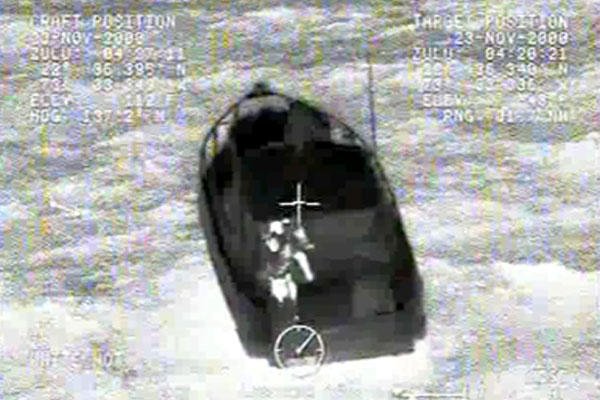EPIRB isn’t just a meaningless acronym; these five simple letters save lives.
Short for emergency position-indicating radio beacon, an EPIRB is a device designed to transmit a distress signal when someone is in trouble. Last week, that “someone” was three fishermen adrift for 30 hours without food and water.
Coast Guard rescue coordinators were first alerted to the distress when they received a report of an activated beacon 16 miles east of Crooked Islands, Bahamas. The vessel was headed to Long Island, Bahamas, from Providenciales, Turks and Caicos, when the boat became disabled due to stormy weather.
The crew of the 6009 – an MH-60 Jayhawk helicopter from Air Station Clearwater – was forward deployed and took flight. Lt. Michael Feltovic was the aircraft commander and recalled the rough conditions that night, including thunderstorms the crew had to navigate around using radar.
While the weather tried to stop them, Feltovic and crew were confident they would find the fishermen. Because the EPIRB had been activated and was properly registered, search and rescue coordinators were in the command center relaying critical information about the boat and its location.
“Launching off in poor weather was not ideal to search for hours for somebody,” said Feltovic. “Because they had an EPIRB, their general position was transmitted directly to the district command center and then passed to us.”
As Feltovic and his co-pilot, Lt. David Garden, came within five miles of the beacon’s position, another key piece of equipment helped the crew make contact with the fishermen – a radio. The crew of the 6009 made a call out to the fishermen.
Focused on pinpointing the boat’s exact location in the darkness of night, the crew of the 6009 knew a flare would be the perfect remedy. The fishermen had an EPIRB and a radio; did they have flares? Yes.
“They shot a flare off and under night vision goggles it’s very easy to see a flare in the distance. The flare gave us the exact position once we were generally on scene,” recalled Feltovic.
Due to size of vessel and the tumultuous sea state the crew’s rescue swimmer, Petty Officer 2nd Class Gerard Landers, was lowered directly into the water. With more than nine years of performing live-saving missions, he made quick work of the daunting task.
“They were anxious to get off the boat. They were getting beat up after running into storms and I just told them ‘Follow my lead and we’ll get you out of here as quick as we can,’” recalled Landers.
Landers credited the work of Petty Officer 2nd Class Fernando Del Cid, the crew’s flight mechanic, who remained focused through four difficult hoists – three for the fishermen and one to recover Landers.
Despite thunderstorms, low visibility and the darkness of night, the crew of the 6009 rescued three people that day. The aircrew’s bravery, training and skills worked hand-in-hand with the fishermen’s EPIRB, radio and flares.




























